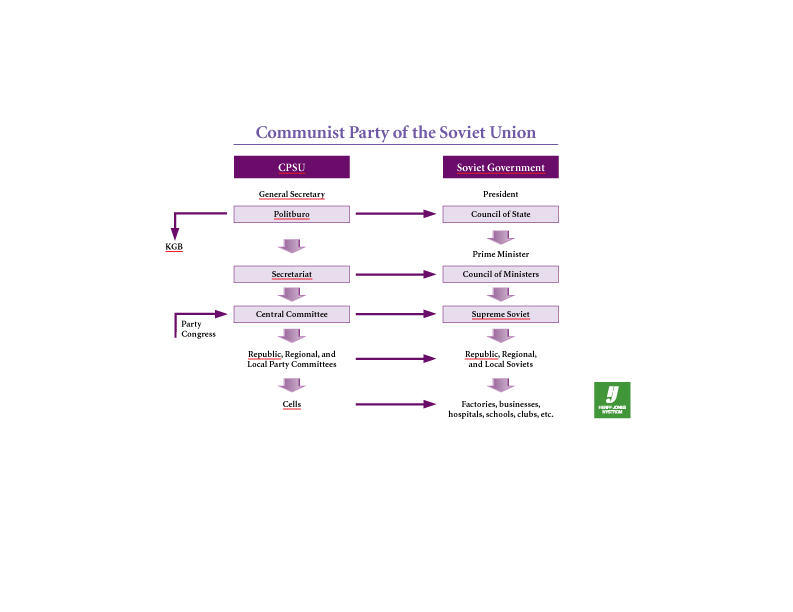
The 1936 and 1977 Soviet constitutions guaranteed the Communist Part had the "leading role" in governing the country. Most CPSU members, sometimes called the nomenklatura or apparatchiks, held positions in the government, and all members were required to follow the orders of party leaders.
The general secretary had the power to appoint party members to virtually any position within the government, and to remove them. As a result, he wielded considerable control over the party and government and was effectively the leader of the Soviet Union. After Lenin's death, all people identified as Soviet leaders (Stalin, Khrushchev, Brezhnev, and Gorbachev) were general secretaries, although they often held additional positions.
The Politburo, or Political Bureau of the Central Committee of the Soviet Union, was the main governing body of the Soviet Union. It set foreign and domestic policy for the party and country.
The KGB (Russian abbreviation for Committee of State Security) was responsible for all security matters. This often involved spying on foreign countries and the Soviet people. The KGB answered only to the Politburo.
The Secretariat was the administrative body of the Communist Party, handling the day-to-day running of the CPSU. It handled things such as membership applications, reports of members disobeying party policy, dues collections, and promotions.
The structure of the Soviet government was superficially similar to governments in Europe and the United States; however, each government official was appointed by CPSU, and appointees answered to the party. Even the highest officials, such as the President and Prime Minister, were appointed or removed by the top party leadership, especially the general secretary.
The Supreme Soviet was the legislative body of the Soviet Union. It was made up of two houses similar in structure to the U.S. Senate and House of Representatives. Members were "elected" directly, but were usually unopposed in their election and were nominated by the local Communist Party.
Republics of the Union of Soviet Socialist Republics (the Soviet Union) were divisions based around ethnicities and were similar in structure to U.S. states. In 1991, the most important republics, known as "union republics," declared independence, triggering the final collapse of the Soviet Union. Today the former Soviet republics are 15 independent nations in Eastern Europe and Central Asia.
Cells, or primary party organizations, were groups of citizens and were the foundation of the CPSU. Each cell had a secretary who acted as its leader. Party cells were not just found in the government but also in factories, schools, professional organizations, and social clubs. The deep involvement of the ruling party in every part of society is the main characteristic of totalitarianism (although the word itself was coined by Fascist leader Benito Mussolini).